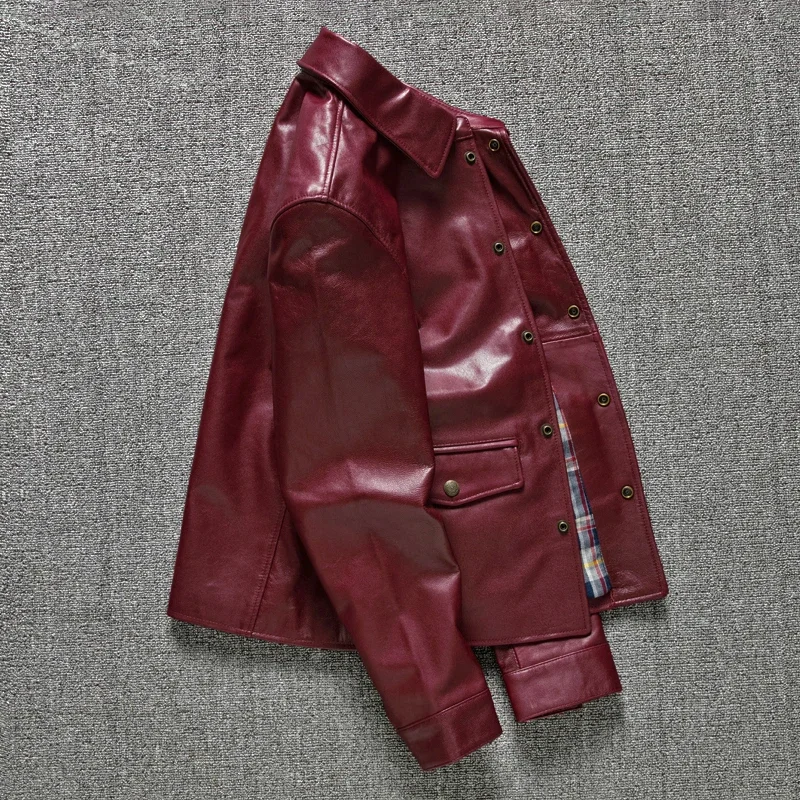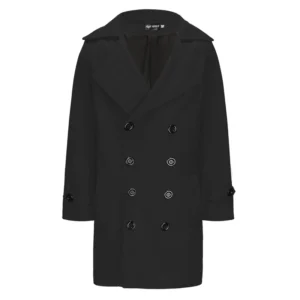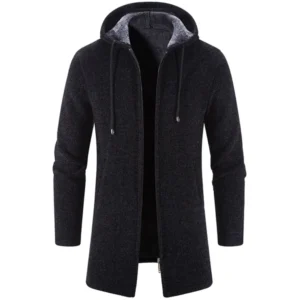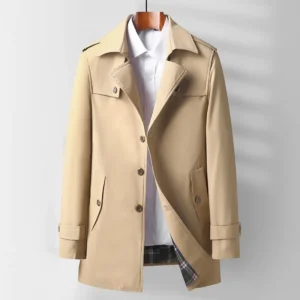Have you ever wondered what makes Harris Tweed special, or why it commands a premium price? Perhaps you’ve heard the name but aren’t quite sure how it differs from other tweeds. In this comprehensive guide, we’ll explore the distinctive characteristics of Harris Tweed and compare it to regular tweed varieties, helping you understand why this iconic fabric stands apart.
What Defines Harris Tweed: The Protected Heritage Fabric
Harris Tweed isn’t just any woolen textile—it’s a legally protected heritage fabric with a remarkable story. The Harris Tweed Act of 1993 established strict legal protections for this unique material, ensuring only fabric that meets specific criteria can bear the famous Harris Tweed name.
At the heart of Harris Tweed’s identity is the iconic Orb Mark—a certification symbol featuring a cross-topped orb with 13 small crosses. This distinctive emblem, first registered in 1909, serves as the consumer’s guarantee of authentic Harris Tweed. When you see this mark, you can be confident the fabric meets these essential requirements:
- Made from 100% pure virgin wool
- Dyed, spun, and finished in the Outer Hebrides of Scotland
- Handwoven by islanders in their homes on traditional looms
- Subject to rigorous inspection through a 5-stage certification process
Understanding quality fabrics like Harris Tweed is essential when choosing the right coat for both style and functionality. The authentication process is meticulous—only after passing multiple inspections can fabric receive the coveted Orb Mark stamp, ensuring consumers receive genuine Harris Tweed with its characteristic quality and heritage.
For those seeking authentic garments made from this exceptional material, our collection of tweed coat options showcases the fabric’s versatility and timeless appeal.
The Rich History and Heritage of Harris Tweed
The story of Harris Tweed begins in the remote Outer Hebrides, an island chain off Scotland’s northwestern coast. For centuries, local crofters (small-scale farmers) produced this hardwearing woolen cloth as a necessity for survival against the harsh Atlantic elements.
What started as a practical material for local use evolved into a globally recognized luxury fabric through a fascinating journey:
- Originally, crofting families produced tweed primarily for themselves and local trade
- The fabric gained wider recognition when Lady Dunmore, a landowner on the Isle of Harris, recognized its commercial potential in the mid-19th century
- She promoted the local weavers’ work to her aristocratic connections, helping establish its reputation for quality
- As demand grew, the Harris Tweed Association (now the Harris Tweed Authority) formed to protect the integrity of the fabric
- The cloth became a symbol of Scottish cultural identity and craftsmanship
Today, Harris Tweed represents one of Scotland’s most iconic cultural exports, embodying the resilience and creativity of island communities while maintaining unbroken ties to traditional production methods. For those interested in the broader historical context, the enduring legacy of tweed as a menswear icon reveals how this fabric has influenced fashion for generations.
Core Characteristics That Make Harris Tweed Exceptional
Harris Tweed possesses several distinctive qualities that set it apart from other woolen fabrics:
Exceptional Durability and Resilience
– Incredible longevity, with properly maintained garments lasting decades
– Maintains shape and structure even with regular wear
– Resistant to pilling and abrasion compared to many other fabrics
Natural Weather Resistance
– Natural lanolin content provides inherent water-repellent properties
– Dense weave creates effective wind resistance
– Excellent thermal regulation—warm in winter yet breathable
Distinctive Texture and Color Depth
– Complex, three-dimensional surface texture from handwoven construction
– Extraordinary color complexity achieved through traditional dyeing methods
– Unique “heathered” appearance from blending differently colored wool fibers
Traditional Craft with Modern Adaptations
– While maintaining traditional production methods, modern Harris Tweed has evolved
– Contemporary productions often feature softer finishes for improved comfort
– Lighter weight options now available while maintaining characteristic durability
What truly distinguishes Harris Tweed is its color complexity. Unlike mass-produced fabrics with flat coloration, Harris Tweed achieves remarkable depth through traditional techniques where wool is dyed before spinning. This creates a vibrant, multidimensional appearance that catches light differently depending on viewing angle.
For those appreciating these exceptional qualities, our selection of premium wool coats includes options that showcase quality fabrics with similar attention to detail and craftsmanship.
Understanding “Regular” Tweed: A Diverse Fabric Family
While Harris Tweed refers to a specific, legally protected fabric from a particular geographic region, “regular tweed” encompasses a broad family of woolen fabrics without such restrictions. These diverse tweeds offer their own distinctive characteristics:
Donegal Tweed
Originating from County Donegal in Ireland, this tweed is immediately recognizable by its colorful flecks or “neps” scattered throughout the fabric. Traditionally woven from local wool, it often features more earthy tones and a slightly rougher texture than other tweeds.
Shetland Tweed
Produced in the Shetland Islands north of Scotland, this tweed is typically softer and lighter than Harris Tweed. Made from the wool of Shetland sheep, it’s known for its fine texture and excellent insulating properties despite its lighter weight.
Cheviot Tweed
Named after the Cheviot Hills bordering England and Scotland, this tweed is made from the wool of Cheviot sheep. It’s characterized by a crisp, clean finish and moderate weight, making it particularly suitable for tailored garments.
Saxony Tweed
Originally from Germany but now produced in various locations, Saxony tweed is made from merino wool and features a softer, more refined finish. It’s often lighter and smoother than more rustic tweeds.
Yorkshire Tweed
Produced in the traditional textile mills of Yorkshire, England, this tweed varies widely in style but often features a softer finish than Scottish tweeds while maintaining durability and structure.
Unlike Harris Tweed, these “regular” tweeds may incorporate various wool types, blends with other fibers, and are produced using different manufacturing methods—often including machine weaving rather than exclusively handweaving.

For those interested in exploring fabrics that combine traditional and modern elements, our wool blend coat collection offers excellent options that often incorporate tweed variations.
Material and Production: Harris Tweed vs. Regular Tweed
The fundamental differences between Harris Tweed and regular tweed begin with their production processes:
| Feature | Harris Tweed | Regular Tweed |
|---|---|---|
| Raw Material | 100% pure virgin wool only | Various wool types; may include blends with synthetic or other natural fibers |
| Production Location | Exclusively in the Outer Hebrides of Scotland | Global production with no geographic restrictions |
| Weaving Method | Must be handwoven by islanders at their homes | Often machine-woven in industrial settings |
| Dyeing Process | Traditional methods in the Outer Hebrides | Varies by manufacturer; may use industrial processes |
| Quality Control | Five-stage inspection by Harris Tweed Authority | Varies by manufacturer; no universal standard |
| Certification | Orb Mark certification required | No unified certification system |
The handweaving requirement for Harris Tweed creates a distinctive texture impossible to replicate through machine production. Each weaver develops subtle variations in tension and rhythm that become literally woven into the fabric, creating a unique character and depth.
When choosing a tweed coat for your body type, understanding these production differences helps explain the unique properties, appearance, and price points between Harris Tweed and regular tweed options.
Texture, Weight, and Feel: Tactile Differences
The tactile experience of tweed varies significantly between Harris Tweed and regular varieties:
Harris Tweed Texture
Traditional Harris Tweed has a substantial, robust hand-feel with noticeable texture. The handweaving process creates a fabric with character—slightly irregular in the best possible way. When you run your fingers across it, you can feel the distinctive crosshatching of the weave and sometimes the subtle variations in thread tension that reveal its handcrafted nature.
Regular Tweed Texture
The feel of regular tweed varies widely depending on its specific type. Donegal tweed often has a rougher texture with its characteristic neps (small knots or slubs), while Saxony tweed feels significantly softer and smoother. Machine-woven tweeds typically display more uniform texture patterns compared to handwoven varieties.
Weight Comparisons
Harris Tweed traditionally runs heavier, typically 16-18 ounces per yard, making it exceptionally durable for outerwear. Regular tweeds offer greater variation, from lightweight 10-ounce fabrics suitable for suits to heavier options comparable to Harris Tweed.
The tactile differences stem directly from production methods—the handweaving process imparts a distinctive character to Harris Tweed that machine production cannot replicate. For a broader perspective on fabric qualities, our guide to tweed versus modern wool coats explores how these traditional fabrics compare to contemporary alternatives.
Weather Performance and Durability
When it comes to performance in challenging conditions, not all tweeds are created equal:
Water Resistance
– Harris Tweed: Superior natural water resistance due to traditional production methods that retain more of the wool’s natural lanolin. The tight, handwoven structure creates an effective barrier against light rain and moisture.
– Regular Tweed: Varies significantly by type. Some quality tweeds offer good water resistance, but many lack the natural lanolin content of Harris Tweed and may require additional treatment for comparable performance.
Wind Protection
– Harris Tweed: Exceptional wind resistance from its dense weave structure and substantial weight. The traditional weaving method creates a tight fabric that effectively blocks cold air.
– Regular Tweed: Generally good wind resistance in heavier varieties, but lighter machine-woven tweeds may allow more air penetration.
Insulation
– Harris Tweed: Outstanding thermal properties with excellent heat retention while maintaining breathability. The natural crimp in the wool fibers creates tiny air pockets that trap heat.
– Regular Tweed: Good to excellent insulation depending on weight and wool quality. Lighter tweeds sacrifice some insulation for reduced weight.
Longevity
– Harris Tweed: Exceptional durability with potential lifespan of decades when properly cared for. The handwoven structure distributes wear more evenly across the fabric.
– Regular Tweed: Varies widely, with premium tweeds offering excellent longevity while less expensive options may show wear more quickly.
The weather performance of tweed makes it ideal for outerwear, with many stylish options available in our herringbone coat collection, featuring one of the most classic and versatile tweed patterns.
Visual Characteristics and Pattern Varieties
The visual appeal of tweed comes from its distinctive patterns and color approaches:
Traditional Harris Tweed Patterns
Harris Tweed is renowned for its complex herringbone weaves, subtle checks, and distinctive plaids. What truly sets Harris Tweed apart visually is its extraordinary depth of color—achieved through traditional dyeing methods where wool is blended before spinning. This creates a heathered appearance with remarkable visual complexity, where a seemingly solid color reveals dozens of harmonious hues upon closer inspection.
Regular Tweed Patterns
Regular tweeds display tremendous pattern diversity:
– Herringbone: A broken zigzag pattern resembling fish bones
– Houndstooth: A distinctive broken check pattern
– Glen check (or Prince of Wales): A complex check with overlaid patterns
– Barleycorn: A pattern resembling scattered barley seeds
– Donegal: Characterized by colorful slubs or flecks on a solid background
Color Approaches
Harris Tweed traditionally features colors inspired by the Hebridean landscape—heather purples, peat browns, ocean blues, and stone grays. Regular tweeds often embrace broader color palettes, including more vibrant options and contemporary combinations.
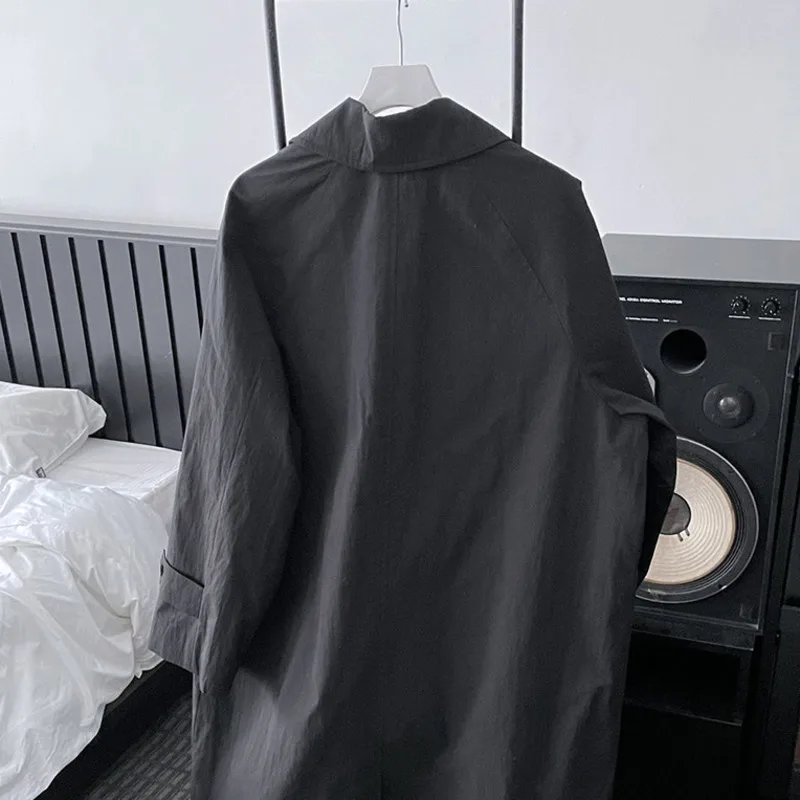
The visual language of tweed has evolved over centuries while maintaining core design elements. Our guide to classic tweed patterns for men’s coats explores these traditional designs in greater depth.
Price Comparison and Value Proposition
The price difference between Harris Tweed and regular tweed reflects their distinct production methods and characteristics:
Harris Tweed Pricing
– Fabric typically costs $60-90+ per yard
– Finished garments command significant premiums
– Higher labor costs due to handweaving requirement
– Limited production capacity increases exclusivity
Regular Tweed Pricing
– Widely variable, from $20-60+ per yard depending on quality
– Machine production allows for more economical manufacturing
– Greater supply availability helps moderate pricing
– Quality varies dramatically across price points
Value Considerations
The premium for Harris Tweed represents more than just a brand name—it reflects genuine production differences with tangible benefits:
- Exceptional durability translates to decades of use with proper care
- Consistent quality standards ensure reliable performance
- Cultural and heritage value as a protected traditional craft
- Supporting sustainable, small-scale production communities
For buyers with different needs and budgets, our wool overcoat collection includes options at various price points that maintain quality standards while accommodating different budget considerations.
When to Choose Harris Tweed vs. Regular Tweed
Selecting between Harris Tweed and regular tweed depends on your specific needs:
Ideal Applications for Harris Tweed
– Investment outerwear pieces intended for years of regular use
– Heritage garments that celebrate traditional craftsmanship
– Outdoor wear requiring superior weather resistance
– Statement pieces where distinctive texture and depth matter
When Regular Tweed Makes More Sense
– More varied style options with broader pattern and weight selection
– Budget-conscious purchases where cost is a significant factor
– Garments intended for occasional rather than regular wear
– Applications requiring lighter weight or softer hand-feel
– When specific tweed varieties (like Donegal) are preferred for their unique characteristics
Climate Considerations
– Harris Tweed’s substantial weight makes it ideal for colder regions
– Lighter regular tweeds may be more appropriate for milder climates
– Consider seasonal wear—heavier tweeds for winter, lighter options for transitional seasons
Your lifestyle, budget, and how frequently you’ll wear the garment should guide your choice. Our diverse overcoat collection includes tweed varieties suited to different needs and preferences.
Mens Double Breasted Pea Coat, Mens Wool Blend Coat, Mens Wool Pea Coat
Price range: $136.84 through $157.36 Select options This product has multiple variants. The options may be chosen on the product pageMens Cashmere Overcoat, Mens Hooded Winter Coat, Mens Wool Blend Coat
Price range: $128.72 through $139.68 Select options This product has multiple variants. The options may be chosen on the product pageMens Black Overcoat, Mens Black Wool Coat, Mens Wool Overcoat
$339.18 Select options This product has multiple variants. The options may be chosen on the product pageMens Grey Overcoat, Mens Wool Blend Coat, Mens Wool Overcoat
$201.28 Select options This product has multiple variants. The options may be chosen on the product pageMens Herringbone Coat, Mens Long Overcoat, Mens Wool Overcoat
Price range: $197.16 through $203.69 Select options This product has multiple variants. The options may be chosen on the product pageMens Long Overcoat, Mens Topcoats
Price range: $189.40 through $196.88 Select options This product has multiple variants. The options may be chosen on the product page
How to Identify Genuine Harris Tweed
Ensuring you’re purchasing authentic Harris Tweed requires attention to specific verification points:
The Orb Mark Authentication
The definitive sign of genuine Harris Tweed is the Orb Mark label, which must be present on all authentic pieces. Look for:
– A clear, well-defined orb symbol with cross on top
– The words “Harris Tweed” clearly printed
– The circular trademark symbol that surrounds the orb
Label Verification Points
Authentic labels will include:
– The words “Harris Tweed” and “Handwoven in the Outer Hebrides of Scotland”
– A unique registration number that can be verified
– Labels sewn securely, not glued or loosely attached
Red Flags for Counterfeits
Be wary of:
– Missing or poorly reproduced Orb Mark
– Vague language like “Harris style tweed” or “Scottish tweed”
– Unusually low prices for Harris Tweed products
– Poor quality construction inconsistent with premium materials
Verification Resources
When in doubt, the Harris Tweed Authority website offers resources for verification and maintains a list of licensed producers and retailers.
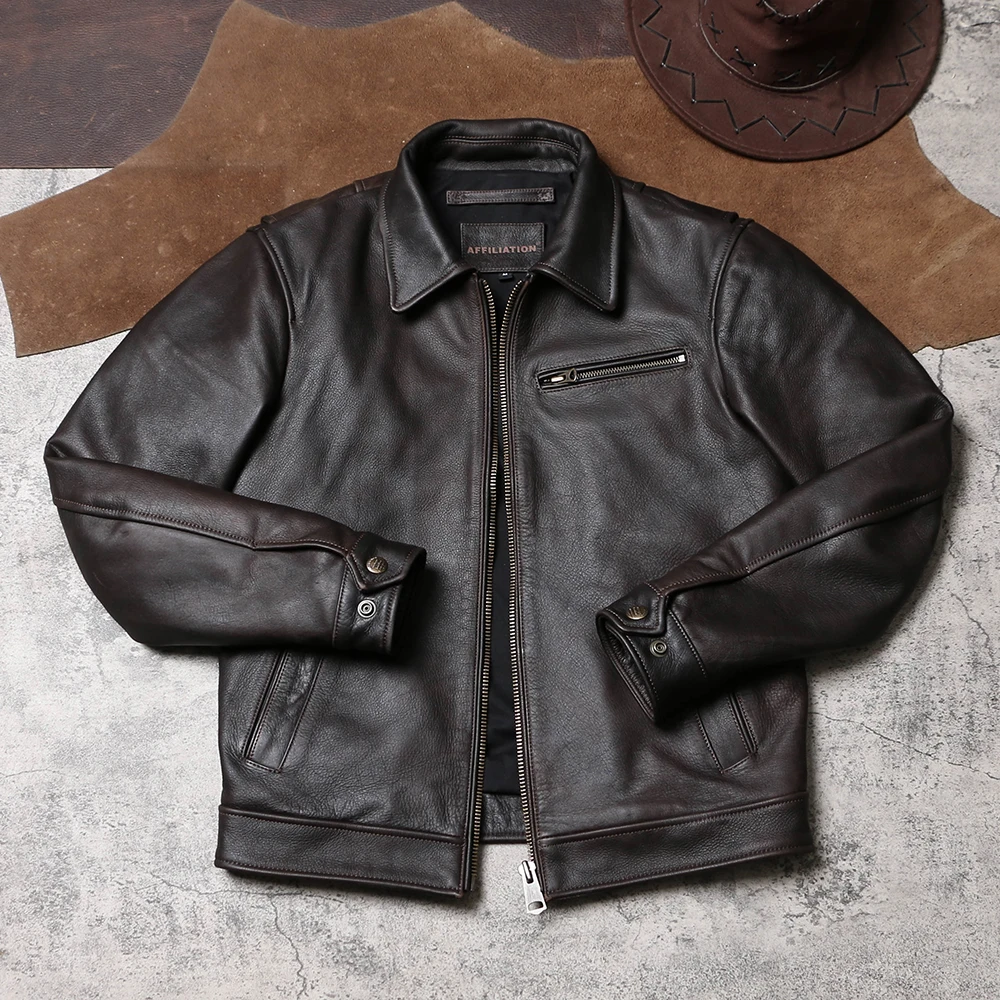
When selecting a tweed coat, understanding proper fit is essential—our style guide for men’s coat lengths helps ensure your tweed garment complements your proportions perfectly.
Is the Premium for Harris Tweed Justified?
The higher cost of Harris Tweed raises an important question: is the premium worth it? Consider these factors:
Quality and Longevity Value
Harris Tweed garments typically last decades with proper care—potentially outlasting multiple less expensive alternatives. When calculated as cost-per-wear over its lifetime, Harris Tweed often proves economical despite the higher initial investment.
Ethical and Sustainability Factors
– Supports traditional crafts and rural communities
– Preserves cultural heritage and specialized skills
– Promotes sustainable production with lower environmental impact
– Creates economic opportunities in remote regions
When the Premium Makes Sense
The premium is most justified when:
– You value heritage, craftsmanship, and tradition
– You plan to keep and wear the garment for many years
– The distinctive aesthetic and quality differences matter to you
– Supporting sustainable production aligns with your values
When Alternative Tweeds May Be Preferable
Regular tweed might be more appropriate when:
– Budget constraints are significant
– You prefer variety over a single investment piece
– Specific non-Harris tweed styles better suit your needs
– The garment will see only occasional wear
For inspiration on how to incorporate tweed into your wardrobe, our guide to styling vintage tweed coats offers creative approaches to this timeless fabric.
Caring for Your Tweed: Maintenance Considerations
Proper care significantly extends the life of any tweed garment:
General Care Principles
– Brush gently after wearing to remove surface dirt and debris
– Air out thoroughly before storing to release moisture
– Address spills promptly by blotting (never rubbing)
– Store on proper hangers to maintain shape
Harris Tweed Specific Care
– Harris Tweed’s density requires more thorough airing between wearings
– Its robust nature allows for gentle brushing with a stiffer brush
– The natural lanolin content helps resist staining but decreases over time
Professional vs. DIY Care
– Dry clean only when necessary (typically once per season or when soiled)
– Choose cleaners experienced with wool and heritage fabrics
– Specify Harris Tweed to ensure appropriate cleaning methods
– Avoid home washing, which can cause shrinkage and texture changes
Storage Recommendations
– Use breathable garment bags rather than plastic
– Add cedar elements to deter moths naturally
– Ensure complete dryness before storing for extended periods
– Avoid hanging in direct sunlight, which can fade colors
For more comprehensive guidance on selecting appropriate outerwear, our comparison of short versus long coats helps determine which style best suits your needs.
Does Harris Tweed Live Up to Its Reputation?
After examining the differences between Harris Tweed and regular tweed, we can address the ultimate question: does Harris Tweed deserve its legendary status?
The evidence suggests Harris Tweed’s reputation is well-earned. Its unique production process genuinely creates distinctive physical properties that cannot be replicated by mass production. The legal protections ensure consistent quality standards, while the handweaving requirement maintains the fabric’s unique character.
However, the value proposition depends on individual priorities. For those seeking maximum durability, authentic heritage, and distinctive aesthetic qualities, Harris Tweed delivers exceptional value despite its premium price. The fabric’s longevity, weather resistance, and timeless appeal make it a worthy investment for many.
At the same time, quality regular tweeds offer their own advantages—greater variety, lighter weights, softer finishes, and more accessible price points. These alternatives provide excellent options for different needs and preferences.
The choice between Harris Tweed and regular tweed ultimately comes down to what you value most—tradition and exceptional durability or versatility and affordability. Either way, tweed in all its forms remains one of the most characterful, functional, and enduring fabric choices available today.

